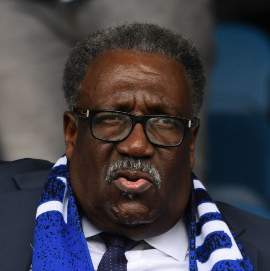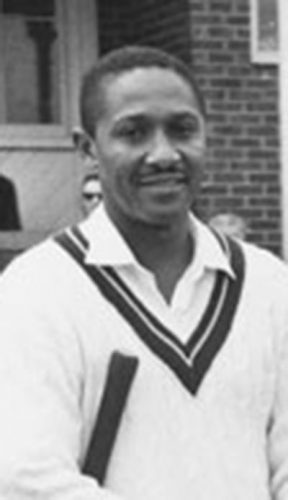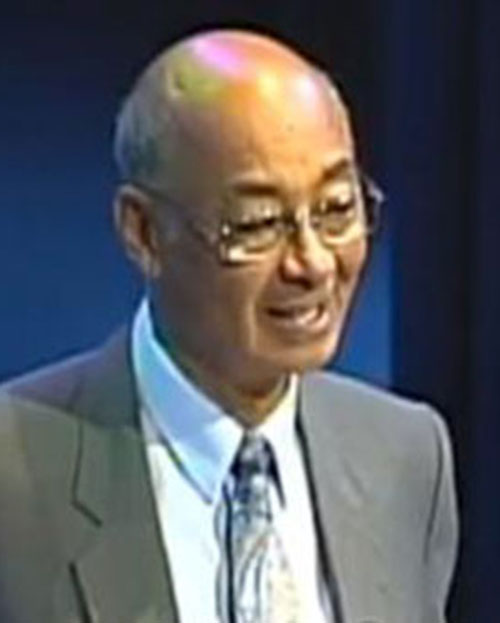A few weeks ago Professor Eudine Barriteau gave this warning to primary school principals: “Invest in primary school education or pay the price.”
She regards public primary education as the bedrock and foundation of our educational system.
She said that if primary education is deficient, we will experience its consequences. Girls and boys would grow physically but would not possess the aptitude, self-confidence, self-worth and sense of belonging that are necessary to navigate an increasingly complex world and build social capital.

I read the Professor’s words with great interest. Had I not known the context of her presentation, I would have sworn that she was talking about the foundations of cricket education and the growth and development of West Indies cricket.
I recently told a cricket coach that if a pupil in school does not learn the fundamentals of English grammar and syntax at an early age, his verbal and writing skills will be limited. Similarly, if a cricketer does not learn or understand the grammar and syntax of batting at an early age, his batting skills and performance will also be substandard.

Cricket has changed dramatically in the last few decades. There are now so many coaching and management techniques in vogue that it is sometimes difficult to know which ones to choose. Old methods have definitely fallen out of favour. However, conventional wisdom and practices are still powerful forces in cricket development and performance.
Our administrators and coaches must now ask if their specialized and highly structured development programmes are enhancing the potential of their players or stifling and harming it? Smart leaders in today’s complex and rapidly changing world have learned how to integrate what is essential from the past with what is congruent with present and future needs and challenges. To what development programmes were our young cricketers exposed in the old days?
The late Sir Frank Worrell is the ideal person to speak about them. He claimed that from about the age of six he was observing and emulating the best players in Barbados. He said: “I seemed to have been playing cricket for a long time when I arrived at Combermere School at the age of 12. I had already done a fair amount of spin bowling for the Roberts’ Boys and I bowled a lot at senior players, even as a young kid of 10 or 11, when they ran out of practice bowlers.
“We used to prepare our wickets in the far corner of the Empire Cricket Ground and we played cricket for days and days during the vacation. We had a team called the Starvation Eleven. Our matches were played to an end. I mean you might find yourself batting for three days and then you had to field for another day or two and it was in this sort of environment that I picked up the few strokes I had.
“I was playing cricket six hours a day and would practice in the mornings before school in the far corner of our Fourth Eleven field. Invariably, we would go into St. Michael’s Cathedral churchyard and play on the concrete in front of a vault in the evenings. And if we weren’t playing cricket in the churchyard we were on the beach. It seemed as though our lives revolved around cricket.
“By the time a player left school at about the age of 19, he had enough skill and experience to walk into any club team without the need for any major adjustment.”
At school, Worrell had no taste for organised or structured cricket practice.
He would often sneak off to play a game of marble cricket, firms, tip and run or one bounce out cricket. When he was forced to go into the nets he would do so unwillingly because his mind was directed to the other games where he had more fun and challenges and where he learned and developed his game more efficiently.
It was in that innovative, creative, competitive and highly unstructured environment that Worrell learned the grammar and syntax of the physical and mental aspects of the game – batting, bowling, fielding, discipline, tactics, concentration, coping with pressure and leadership.
Years later, Worrell built on that solid foundation in England. Of League cricket in the UK Worrell said: “One can learn more in three years of league cricket than in 12 years of cricket outside the UK. Even at the international level.
“One learns to cope with the swerving ball, the turning ball, the cutter, and the stopping ball. One has to be brave enough to ignore the cold, dark or blustery weather, the running noses, watery eyes, cold hands and feet, faulty umpiring decisions, dropped catches and occasional needle matches.
“The professional who can take these things in his stride will return to international cricket as an individual with something to subscribe to the game.
Self-discipline and a tremendous sense of responsibility are two of the greatest assets one gets from league cricket. League cricket is a must for any young cricketer who wants to make the grade.”
Almost all of the great players in the Worrell and (sir Clive) Lloyd world championship teams shared that model of cricket education, learning and development. When that successful model was abandoned, West Indies cricket became trapped in an ever-increasing failure spiral. This decline took place in spite of the use of new technology, numerous professional coaching and management techniques, and highly structured and specialised development programmes.
One could ask why those old educational and development modules produced such outstanding players and results, and why the new ones have not? This question should not be taken lightly. It requires an honest answer.Under the age of 10, the brain is like a sponge that soaks up everything to which it is exposed. That is when most of the programmes that control adult behaviour are downloaded into the subconscious part of the brain. That is why correct early education is so important. This was known 400 years ago when Jesuit priests proclaimed: “Give us a child until the age of seven and we will show you the man.”
Unfortunately, far too many negative programmes are downloaded into the young brain during this period. These downloads often produce bad habits, self-doubts and self-defeating behaviour. About five percent of the brain’s activities take place at a conscious level. The other ninety-five percent – movement, breathing, regulation of the heart, digestion, etc. – take place at an unconscious level.
After the age of ten, the brain is in a different state. It then learns by practice and repetition, Experts now say that to become an expert, you must practice for at least three hours a day for 10 years. Unlike modern youngsters, Worrell practiced six hours every day.
Learning, growth and development are often more about unlearning and removing bad habits, fears, self-doubts and negative thinking that were imprinted in the brain at a young age, than about learning and adding new ones. These dangerous programmes can be deleted and replaced using hypnotic methods and new techniques in Energy Psychology.
Today’s coaches are clever and well qualified but they seem to lack the wisdom of the old teachers and players who used self-directed learning and self-coaching as first important priorities.





